July 15, 2021, by Kathryn Steenson
An almost entirely cow-free post about cows
You may have seen the recent news that the University of Nottingham has been trialling medication to make cows less gassy and, potentially, reduce methane emissions in the dairy industry. The research is being carried out at Sutton Bonington, and it’s part of a century-long tradition of research carried out there.
The Sutton Bonington Campus is home to the Centre for Dairy Science Innovation and the University Farm, but the precursor was the Midland Agricultural and Dairy College. Founded in the 1890s and based at Kingston-on-Soar, there was a complicated on-again, off-again relationship with the original University College Nottingham, until it became an entirely separate institution in 1900.
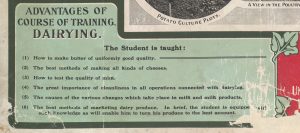
Poster for The Midland Agricultural College at Kingston-on-Soar, Nottinghamshire. Only half the poster survives. Undated, but the college was based at Kingston between 1906 and 1919. Ref: UAC/4/2
It offered Dairying courses lasting between 6 and 36 weeks, depending on whether students were going to manage a farm or wanted training to be a dairy-maid. The shorter courses were vocational and students were expected to learn how to make butter and cheese, and students had access to microbiology labs. Food production was beginning to be treated more scientifically, with an emphasis on hygiene as well as increasing yields. As you can see in the photo on the left below, two female students demonstrated their skills at a local agricultural show, watched over by the very stern looking Head Dairy Instructress Miss Rowland. On the right are two students testing the milk from the dairy herd. I don’t know how much milk was produced in the 1920s (the UAC records are quite patchy) but today it’s in the region of 2 million litres a year.
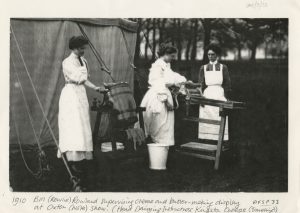
Photograph of a cheese and butter making display at a local agricultural show [Midland Agricultural and Dairy College staff and students], 1910 Ref: UMP/5/33
It wasn’t just cows: the college offered theoretical and practical courses in a range of agricultural and horticultural subjects. It was also the headquarters of the Board of Agriculture in the Midlands. The expansion in the Board of Agriculture’s advisory role and an increase in student numbers led to the College purchasing a new 100 acre site at Sutton Bonington in 1911, which was almost immediately requisitioned by the Government during WWI, so it wasn’t until 1928 that the Kingston site finally closed and all activities transferred to Sutton Bonington. The photo of the cowshed below was taken not too long after the site was handed back after the end of the war. It’s spacious, there’s light from a fancy semi-circle window in the eaves, and strangely bereft of any cows.
In 1943 the Midland Dairy and Agricultural College rekindled the relationship with University College Nottingham. A joint Faculty of Agriculture and Horticulture was established with 17 board members from the Agricultural College and 11 from the University College. In 1946 ownership of the buildings at Sutton Bonington was transferred from the county council to the University College, and the Faculty became fully part of the new University of Nottingham in 1948. The slightly blurred students in the photo above would have been among the first graduates from this new faculty. It’s also one of the very few photos of cows in the University Archives.
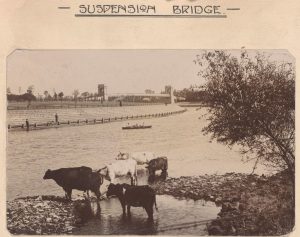
Photograph of cows in the River Trent with Wilford Suspension Bridge behind them. This has nothing to do with anything, except that this blog post needed more cow content. Ref: R/HR/1/8/1/112
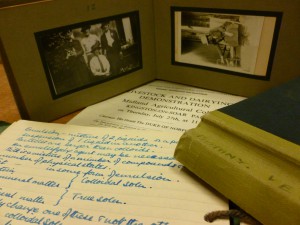
Photographs, lecture notes, and letters from former Midland Agricultural College students, including a flyer for a ‘Livestock and Dairying Demonstration’.
For more information about the current related degrees taught, see the Schools of Biosciences, Life Sciences, and Veterinary Science websites. There may still be places available for some courses starting this September via clearing from 10 August. For more university history, see Manuscripts & Special Collections website for details about the collections and how to see them. You can also follow us @mssUniNott and read our online magazine Discover.
No comments yet, fill out a comment to be the first

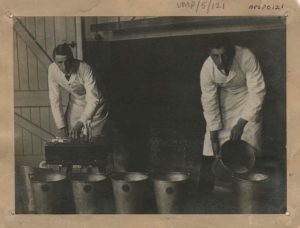
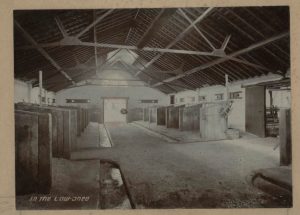
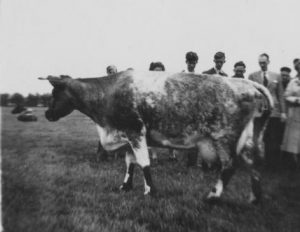
Leave a Reply